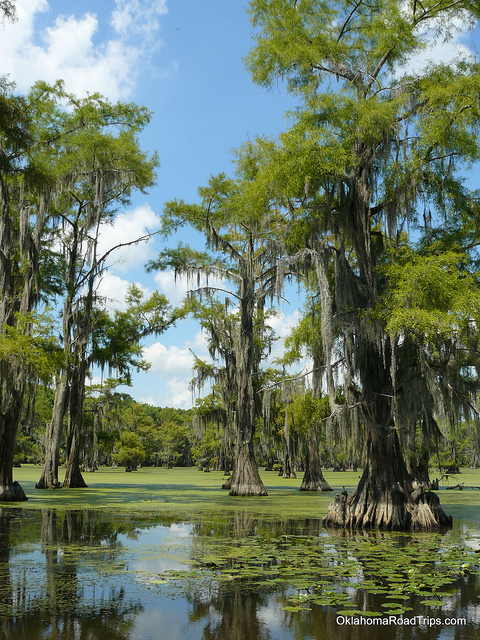Sixty feet deep in the waters of the Gulf of Mexico, ten miles off the coast of Alabama, lies a forest of Cyprus trees thousands of years old.
The trees grew on dry ground over 50,000 years ago, but eventually, sea levels rose and hundreds of tree stumps and logs the size of trucks were covered by sediments. The sediments blocked oxygen from getting to the fragile wood, preserving them down the millennia.
Then, Katrina. The storm that devastated New Orleans made its mark not only on the cultural landscape of the Gulf Coast, but also on the sea bed. The winds and waves stirred up those deep layers of sediment, sweeping them away to reveal the waterlogged remnants of the forest.
Fish and other sea creatures discovered the site first, making homes among the stumps. Fishermen followed the fish, and some decided to get a closer look at what was attracting their catch to that spot. The few fishermen that knew of the site took a select few scuba divers out to the spot, keeping the location a guarded secret.
Only recently have some scientists gained access to the site.
From Live Science:
The scientists think they have just a couple of years to analyze
these trees before ocean life takes over enough to make the wood samples
undatable, according to LiveScience. Good thing those fishermen decided
to share their find as soon as they did.
The trees grew on dry ground over 50,000 years ago, but eventually, sea levels rose and hundreds of tree stumps and logs the size of trucks were covered by sediments. The sediments blocked oxygen from getting to the fragile wood, preserving them down the millennia.
Then, Katrina. The storm that devastated New Orleans made its mark not only on the cultural landscape of the Gulf Coast, but also on the sea bed. The winds and waves stirred up those deep layers of sediment, sweeping them away to reveal the waterlogged remnants of the forest.
Fish and other sea creatures discovered the site first, making homes among the stumps. Fishermen followed the fish, and some decided to get a closer look at what was attracting their catch to that spot. The few fishermen that knew of the site took a select few scuba divers out to the spot, keeping the location a guarded secret.
Only recently have some scientists gained access to the site.
From Live Science:
The trees’ growth rings could
reveal secrets about the climate of the Gulf of Mexico thousands of
years ago, during a period known as the Wisconsin Glacial period, when
sea levels were much lower than they are today.
In addition, because Bald Cypress trees can live a thousand years, and there are so many of them, the trees could contain thousands of years of climate history for the region, Harley said.
“These stumps are so big, they’re upwards
of two meters in diameter — the size of trucks,” [dendochronologist
Grant] Harley told OurAmazingPlanet. “They probably contain thousands of
growth rings.”
***

No comments:
Post a Comment